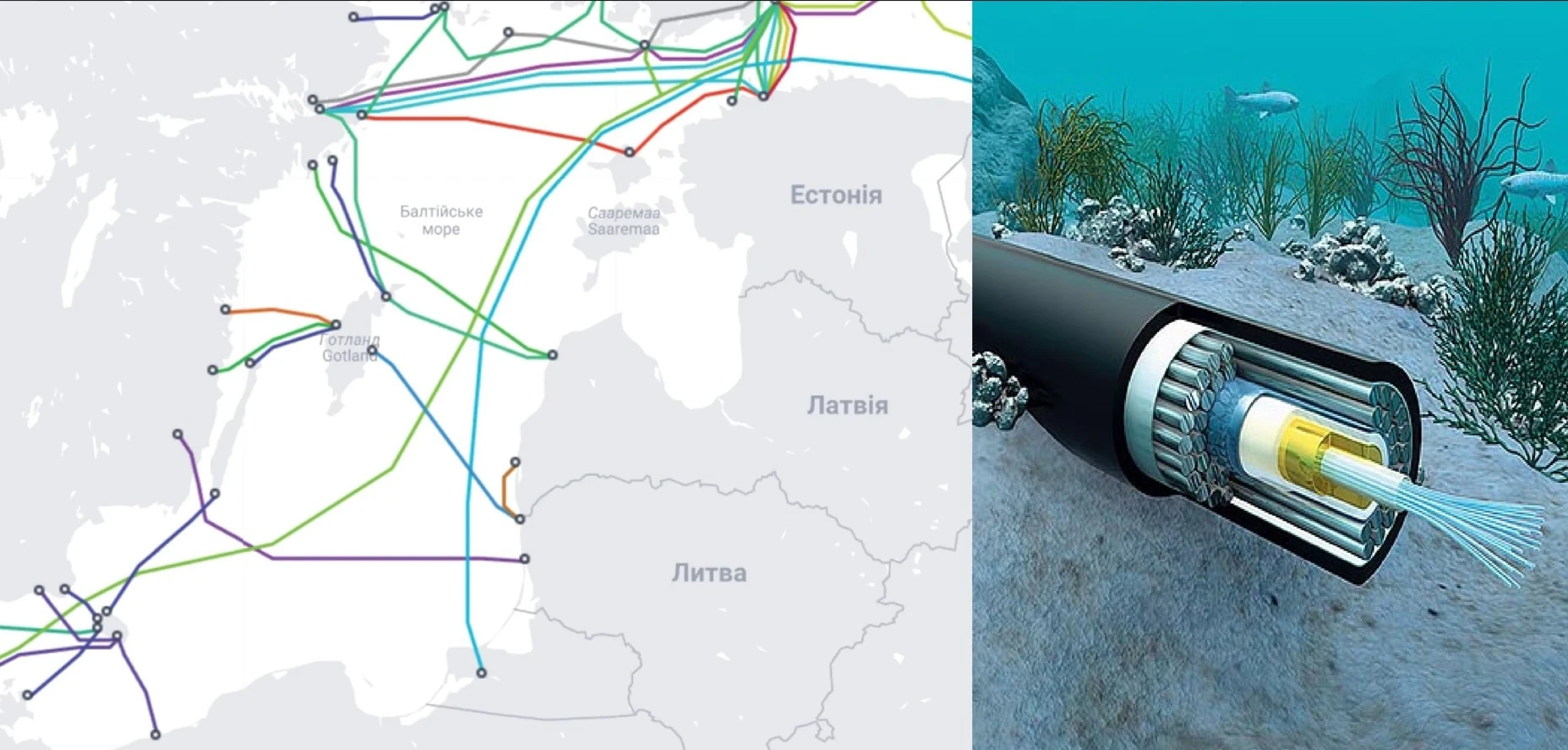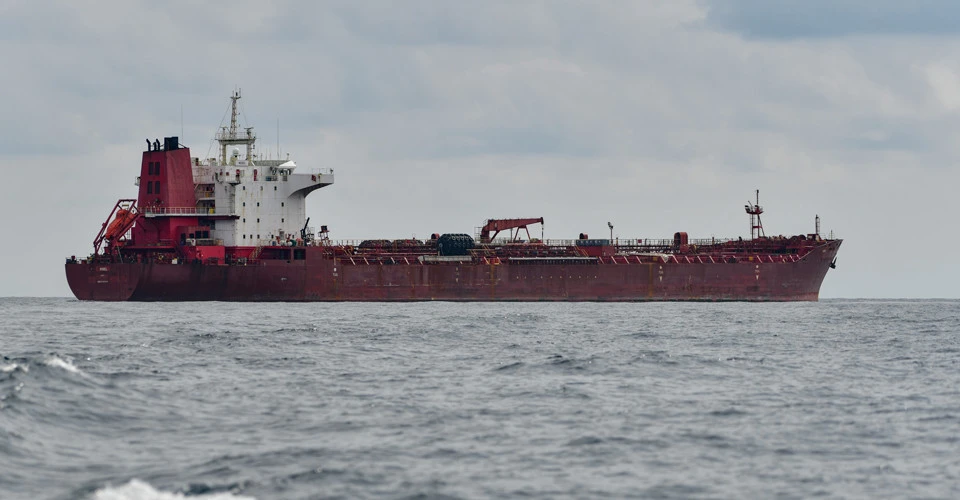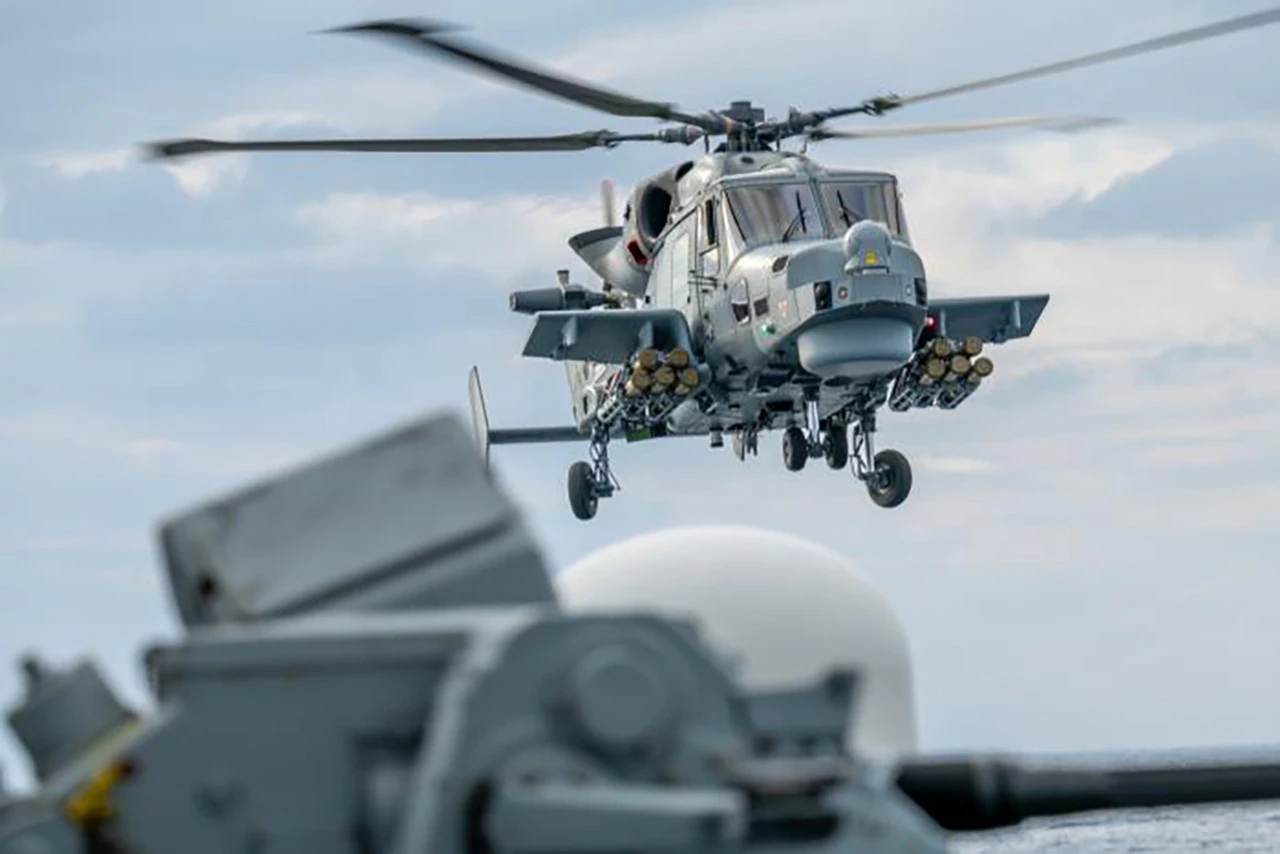
Cable sabotage: tracing Russia’s hand in attacks on critical Baltic Sea infrastructure
The Baltic Sea, with the accession of Sweden and Finland to the North Atlantic Treaty, has begun to be called “NATO’s inland sea.” This is a strategically important region, connected not only by a military-political alliance but also by numerous underwater communication cables, which have recently been “mysteriously” failing—not without the help of the Kremlin
Contents
- How underwater communication cables emerged and why the internet would not function without them
- What underwater cables exist in the Baltic Sea
- 11 attacks in the Baltic Sea: why underwater cables fail so often and whether Russia is involved
- How NATO is responding and what experts say about hybrid warfare in the Baltic Sea
Espreso will explain the significance of underwater cables and the hybrid war taking place beneath the waters of the Baltic Sea.
How underwater communication cables emerged and why the internet would not function without them

Photo: Wikipedia, submarine cable network as of 1901
Underwater communication cables are the foundation of modern global connectivity. However, their history began nearly 200 years ago, when the telegraph was invented in the 1830s. This device was revolutionary for its time, allowing the nearly instantaneous transmission of important information over distances as far as its wires could reach. The successful commercialization of this invention and its integration into government operations prompted businessmen and authorities of the time to seek ways to lay wires underwater to connect entire continents.
- The first attempts began in the 1850s. The leader in this endeavor was the British Empire, whose vast maritime domain required reliable communication between London, India, and other colonies. Initially, cables were laid along coastlines, but soon there arose a need for a transatlantic underwater cable to connect the markets of the Old and New Worlds. Several such cables, stretching thousands of kilometers, were laid in the 1860s, ensuring that Europe and America would no longer go to sleep without knowing what was happening in the world.
By the early 20th century, these cables connected Europe not only with North America but also with South America, Africa, Asia, and even Australia. Thus, the world became a single “information hive.” However, the problem with these early wires was their low bandwidth. It took another 50 years to lay the necessary underwater wires that would allow, for example, a telephone call from Paris to New York.
The next revolution in this field, which led to the laying of even more cables along the seabed, occurred in the 1980s with the advent of modern fiber optics, significantly increasing data transmission capacity and quality. In the 1990s and 2000s, the global internet boom led to a situation where nearly 99% of global internet traffic is transmitted via underwater communication cables. These cables are now a critical infrastructure for modern civilization, which operates online 24/7.
Incidentally, the world’s longest underwater cable, 2Africa, being laid by Meta (Facebook) in collaboration with other companies, spans over 45,000 km, covering Africa, Europe, and Asia. While companies like SpaceX and Amazon are expanding their satellite projects, such as Starlink, underwater cables will remain the primary means of data transmission due to their high speed and low signal latency. This will likely remain the case for many years, if not decades.
What underwater cables exist in the Baltic Sea

Photo: submarinecablemap
One of the first underwater telegraph cables in the Baltic Sea was laid between Sweden and Denmark in the 1850s. Soon, other Baltic region countries joined the development of underwater communications. Throughout the 20th century, with the rise of telephone communication, underwater lines became an integral part of international communications for the countries surrounding the Baltic Sea.
With the advent of the internet in the 1990s, the Baltic Sea became a key route for laying fiber-optic cables, enabling high-speed connectivity between Europe and the rest of the world.
Today, underwater cables in the Baltic Sea are essential for internet access, financial transactions, and communications between governments and corporations. Some of the most important cable systems in this region include:
- C-Lion1 (2016) – connects Helsinki (Finland) and Rostock (Germany). It is crucial for traffic between Scandinavia and Western Europe.
- Eastern Light – a system linking Sweden, Finland, Estonia, and Latvia.
- Baltic Cable – connects Sweden and Germany.
- Nordic-Baltic Gateway – links the Baltic states with Poland and Sweden.
As noted by the publication Bild, these and many other cables are critical for the stability of internet connections in Europe, especially for the financial sector, defense, and cybersecurity.
11 attacks in the Baltic Sea: why underwater cables fail so often and whether Russia is involved

Photo for illustrative purposes
Throughout history, underwater communication cables have been repeatedly damaged for various reasons. In most cases, it is due to natural factors, such as earthquakes and underwater landslides. There have also been multiple instances where whales got entangled in them or even sharks bit through them. The human factor is also present, mostly due to fishing and dropping anchors in unauthorized areas. That is why underwater communication cables are constantly being repaired worldwide every year.
However, apart from unintentional human actions, there is another factor—deliberate sabotage between warring countries, as well as the desire to profit. For example, the first attack on underwater communication occurred during World War I, when the German cruiser “Nürnberg” attacked Fanning Atoll in the Pacific Ocean, where a British relay station was located. In the 2000s, there were cases where maritime pirates stole kilometers of cable to sell it for scrap metal.
At the beginning of March 2024, a massive failure of key internet services occurred due to damage to three underwater communication cables in the Red Sea. Officially, it is still unknown who did it, but the main theory suggests Yemeni Houthis, who were active at the time and threatening other countries.
Recently, unclear actions classified as hybrid warfare have also been occurring in the Baltic Sea. These incidents appear to be sabotage operations, with traces leading to Russia and its war not only against Ukraine but against the entire Western world.
The first such damage was reported in October 2023. At that time, the Balticconnector underwater gas pipeline, connecting Finland and Estonia, was damaged, along with a telecommunication cable running nearby. The President of Finland stated that the likely cause was external interference, and an investigation was launched. According to European Pravda, high-ranking officials avoided directly accusing Russia, but experts clearly pointed to the culprit—likely a Russian ship that deliberately dragged its anchor along the seabed.
Later, the Swedish government reported another damaged telecommunication cable leading to Estonia.
“We live in a time when civilian infrastructure is also under great threat. We have a very clear lesson from Ukraine, where Russians are attacking infrastructure,” said the Prime Minister of Sweden, commenting on the incident.
In 2024, such incidents increased.
In November 2024, communication cables between Sweden and Lithuania, as well as between Finland and Germany, were damaged. The investigation found that the Chinese cargo ship “Yi Peng 3” may have deliberately dragged its anchor along the bottom of the Baltic Sea.
On December 25, the Estlink 2 cable between Finland and Estonia was severed. The main suspect is the oil tanker “Eagle S”, which is part of Russia’s shadow fleet. It was detained, and investigators found anchor marks stretching for tens of kilometers along the seabed.
According to Korrespondent.net, as of January 20, 2025, there had been 10 such attacks. However, on January 26, another underwater fiber-optic cable between Latvia and Sweden was damaged. A few days later, Norway detained the ship “Silver Dania”, suspected of being involved in this sabotage. Notably, all crew members were Russians.
Thus, over the past one and a half years, there have been a total of 11 such attacks on underwater communication cables in the Baltic Sea, with the most likely cause being deliberate anchor dragging by Russian and Chinese vessels.
“Despite the lack of public information proving direct coordination and conspiracy between China and Russia, I do not believe in coincidences in international affairs,” said Heino Klinck, former Deputy Assistant Secretary of Defense for East Asian Affairs, in a comment to Fox News.
“Both malicious actors thrive in the gray zone, and these attacks seem to reinforce and inspire them, as they demonstrate the ineffective international response to current challenges.”
How NATO is responding and what experts say about hybrid warfare in the Baltic Sea

Royal Navy Wildcat helicopter equipped with the Martlet missile system, Photo: des.mod.uk
Recently, the spokesperson for the Ukrainian Navy, Dmytro Pletenchuk, stated that the Russians may have mastered a new type of attack on European countries—an “anchor attack.”
“The Russians are afraid to act openly because the Baltic Sea has essentially become an inland sea of NATO, and, of course, the Russians have no advantages there. Moreover, they could end up in a real blockade. But regarding these cases and these hybrid ways of influencing neighbors—at first, I was inclined to believe it was accidental. Because, from a practical standpoint, if done intentionally, it is actually quite difficult to execute. However, the sheer number of incidents suggests that this is likely a tactic, and they have probably mastered a new type of attack, the ‘anchor attack’, which is what we are now witnessing,” Pletenchuk noted.
In response to the pattern of “accidental” attacks on underwater infrastructure, NATO countries increased their presence in the Baltic Sea at the end of December. In mid-January, NATO Secretary-General Mark Rutte announced the launch of a new mission, Baltic Sentry, aimed at securing infrastructure in the Baltic Sea. The mission was placed under the command of Christopher Cavoli, Supreme Allied Commander Europe. The alliance deployed additional frigates, aircraft, drones, and other advanced technologies for sea patrols.
Estonian Defense Minister Hanno Pevkur proposed imposing taxes on ships passing through the Baltic Sea to finance the protection of underwater cables. However, there is no agreement on this yet, and various options are still being considered.
According to international energy and security expert Mykhailo Honchar, Western military officials had long warned—before Russia’s full-scale war against Ukraine—that underwater infrastructure needed better protection, but these warnings were largely ignored.
“The inaction or insufficient action of the leading Western nations—the United States, the United Kingdom, Germany, France, and NATO as a whole—has created a significant zone of vulnerability, which Russia is already exploiting in its hybrid aggression (hybression) against the Alliance. If Russia’s overall weakness makes a conventional conflict with NATO unattractive for the Kremlin, then asymmetric actions, such as destroying underwater telecommunications networks at ‘H-hour,’ become far more appealing,” the expert emphasized.
‘H-hour’ is a standard military term referring to the start of a military operation. Mykhailo Honchar suggests that Russia continues to prepare for ‘H-hour’ by creating a state of disinformation, chaos, and disorganization within the governance systems of the United States and EU countries, thereby opening a window of opportunity for geopolitical rollback against the West.
“The dysfunction of energy and telecommunications networks would automatically create chaos in government administration, defense, and security, as well as in national financial and international payment systems. This is exactly what Russia seeks—to strike its existential enemy, the West, in a comprehensive and multidimensional manner at ‘H-hour,’” the expert explained.
However, not everyone agrees that the increasing number of incidents with underwater cables in the Baltic Sea is necessarily linked to the Kremlin’s activities.
On January 19, The Washington Post published an exclusive report, stating that among U.S. and European security agencies, a “consensus” had emerged that the damage to underwater cables was caused by maritime accidents rather than Russian sabotage.
“Investigations involving the U.S. and European intelligence services found no evidence of deliberate actions by the suspect vessels or any connection to Moscow,” the publication reported.
The gathered data, including intercepted communications, allegedly indicates that the incidents could have been caused by “inexperienced crews on poorly maintained ships.” As a result, U.S. and European law enforcement officials agree that the damage was likely accidental and that there is no evidence of Russia’s involvement.
However, as The Washington Post notes, some European officials point to counter-evidence suggesting the opposite.
For example, Finnish MEP and former military intelligence chief Pekka Toveri described the incidents in the Baltic Sea as a “typical hybrid operation” by Moscow. He emphasized that deniability is the key element of such operations and that, while Russia may have left no evidence admissible in court, calling these incidents mere accidents is “complete nonsense.”
Toveri pointed out that Russia has been studying the vulnerabilities of Western maritime infrastructure for years. He and other experts also highlighted the abnormal behavior of suspect vessels, some of which dragged anchors for more than 160 km. According to him, in the case of an accidental break, the crew would have immediately responded.
In any case, investigations into all the cable disruptions are still ongoing. While some incidents may have been accidental, their frequency and the irresponsible behavior of the crews involved strongly suggest a coordinated Kremlin attack on NATO’s communication lines.
- News












































